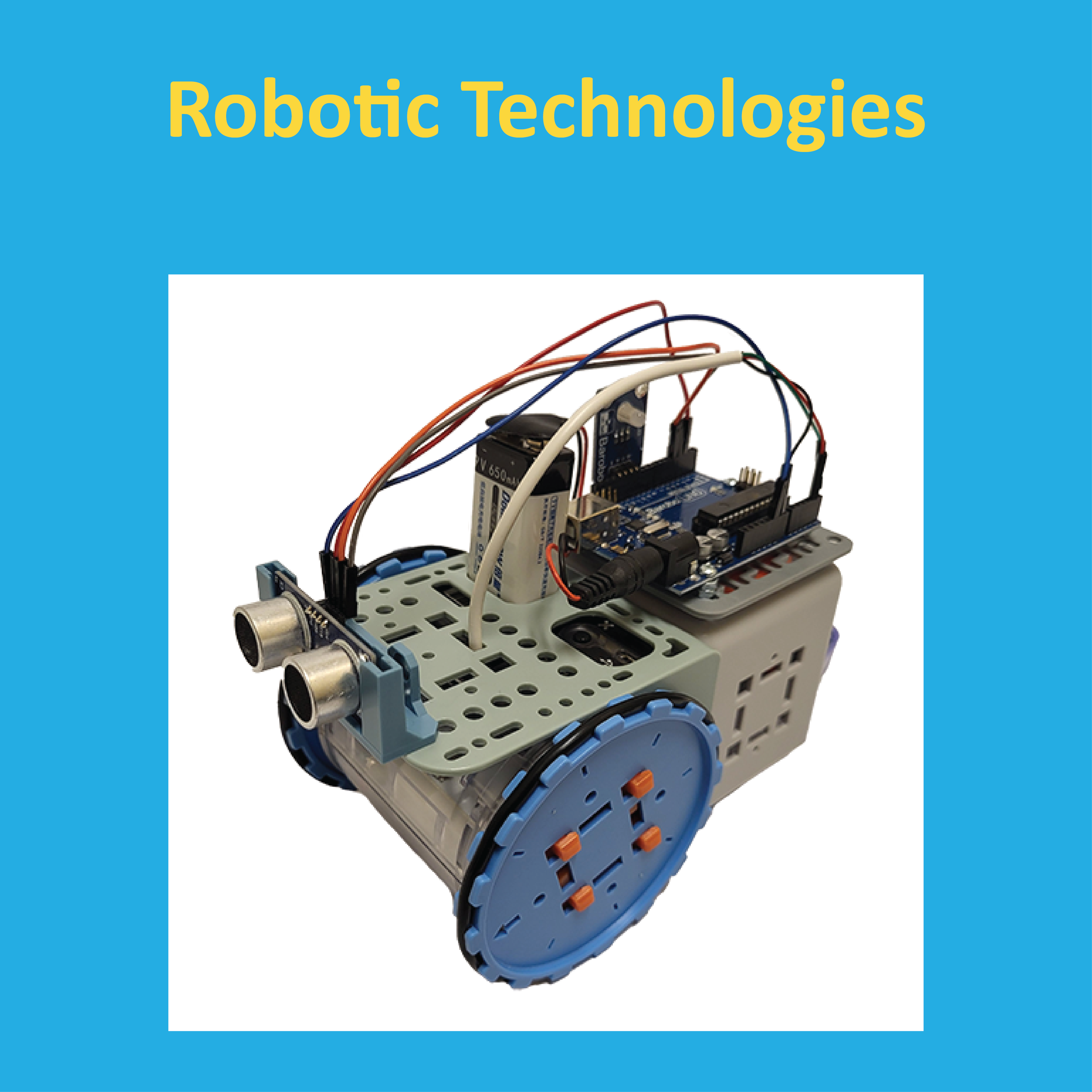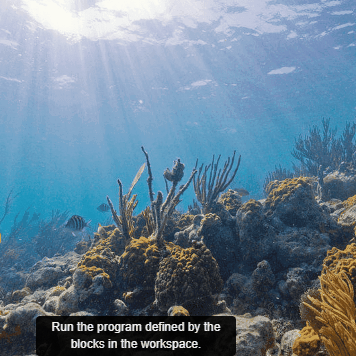K-12 RoboBlocky Math, Computer Science with Robotics,
and Engineering Design with Robotics
For Classroom and Expanded Learning

RoboBlocky is a web-based learning platform for math, computer science, and STEAM that integrates hands-on coding and robotics into instruction. Developed over the past decade in collaboration with the C-STEM Center at the University of California, Davis and numerous K-12 partners, RoboBlocky integrates an engaging curriculum with virtual and hardware robots, as well as supporting print workbooks. Its Math, Computer Science, Engineering Design, and Expanded Learning curricula, along with the RoboPlay Challenge Competition, provide schools with flexible, cost-effective options for teaching and enriching math, computer science, and STEAM education.
Prime Curriculum: RoboBlocky Math, Computer Science with Robotics, Engineering Design with Robotics, and Robotics and Robotics-Math for Expanded Learning
The Prime Curriculum is designed for authorized instructors and their students in classroom or expanded learning settings. It supports personalized and collaborative learning across various contexts, including core instruction, intervention, supplemental programs, enrichment, and expanded learning.
For licensing and access to the Prime Curriculum and Learning Management System (LMS), please contact us.
 |  |  |  |
 |  |  |  |
 |  |  |  |
 |  |  |  |
 |  |
\({\rm\bf RoboBlocky\; Math}^{\rm TM}\) is an innovative curriculum designed for \({\rm\bf Learning\;Math\; with\; Coding\; and\; Robotics}^{\rm TM}\). By integrating coding, robotics, and problem-solving, it connects math concepts to real-world applications, helping students understand the relevance of what they’re learning while developing critical skills for future opportunities in Science, Technology, Engineering, and Math (STEM).
- Aligned with state math standards (including new CA Math Framework) and featuring Big Idea Tasks (grades K-5) and Big Idea Projects (grades 6-12), RoboBlocky Math, together with grade-level print workbooks, can be used as a core resource for teaching K-12 math. It also includes alignment guides for many widely used math textbooks, enabling educators to easily adapt it as a supplement to their existing curriculum.
- The curriculum gives students opportunities to explore mathematical ideas, apply their learning through coding and robotics activities, and reflect on their progress. Designed for diverse learners, it offers multiple ways for students to demonstrate understanding, such as solving problems, coding with virtual robots or optional hardware robots, and engaging in collaboration and discussion.
- RoboBlocky Math has been shown to improve student outcomes. In one success story, the percentage of sixth-grade students meeting or exceeding state math standards rose from 16% (based on their 5th grade performance the previous year) to 71%, representing a 344% improvement. RoboBlocky Math supports equitable and effective STEM education and helps raise math achievement for all students.
 |  |  |  |
 |  |  |  |
 |  |  |  |
The Computer Science with Robotics curriculum motivates and engages students in learning the fundamentals of computer science through hands-on, interactive robotics lessons using both virtual and hardware robots. Students develop foundational experience and skills in:
- Computational thinking and logical reasoning.
- Reading comprehension, direction-following, and understanding sequential processes.
- Mathematical modeling and graphing using manipulatives and coordinate systems.
- Creative storytelling and comprehensive projects that support collaboration and distance learning.
- Transitioning smoothly from block-based coding to text-based programming in C/C++.
Each course within the curriculum is tailored to a specific grade level, with consideration given to students’ cognitive development and mathematical proficiency. No prior experience with coding or robotics is required. The courses may be implemented as stand-alone curricula or integrated as supplements to existing math, computer science, or STEAM programs. For more information, please click here.
 |  |  |  |
 |  |  |  |
 |  |
- SnapConnect technology: With Barobo patented SnapConnect technology, multiple Linkbots and accessories can be easily and quickly snapped together, without the need for special tools, to create a wide range of robotic systems for diverse tasks and projects, such as RoboPlay Challenge Competitions.
- K-12 versatility: The same hardware and programming tools can be used across all grade levels and subjects, from K to 12, allowing students to progressively deepen their learning while using the same versatile resources.
- Diverse robotics tools: The curriculum incorporates Linkbots, OmniBot robots, Arduino boards, and sensor-based robotics, offering unprecedented hands-on opportunities for learning and engineering design with multiple robots.
- Ease of programming: The multi-robot machines that students create can be easily programmed, allowing them to quickly engage with both math and coding concepts while seeing immediate results through interactive activities.
- LEGO integration: Widely available LEGO parts can easily be incorporated into student-designed Linkbot robot machines, further expanding design possibilities.
| Robotics: Grades TK-K | Robotics: Grades 1-2 | Robotics: Grades 3-5 | Robotics: Grades 6-8 | Robotics: Grades 9-12 |
 |  |  |  |  |
| Robotics-Math: Grades TK-K | Robotics-Math: Grades 1-2 | Robotics-Math: Grades 3-5 | Robotics-Fractions: Grades 3-6 | Robotics-Math: Grades 6-8 |
 |  |  |  |  |
| Robotics-Math: Grades 9-12 | ||||
 |
The Robotics and Robotics-Math Programs for Expanded Learning curriculum, designed for afterschool and summer programs:
- Engage students in hands-on computer science and robotics activities.
- Provide opportunities for both accelerated and intervention math learning through real-world problem-solving.
- Nurture creativity and imagination as students design and program their own robot machines.
- Enhance teamwork and communication skills through collaborative robotics projects
- Prepare students to participate in the math-focused, level-playing-field RoboPlay Challenge Competitions.
The same hardware and programming tools used in regular classroom instruction can be utilized in expanded learning programs, making implementation highly cost-effective while offering additional time for hands-on exploration and deeper learning. For more information, please click here.
| Holiday Activities (Grades TK-K) | Holiday Activities (Grades 1-2) | Holiday Activities (Grades 3-5) | Holiday Activities (Grades 6-8) | Holiday Activities (Grades 9-12) |
 |  |  |  |  |
| RoboPlay Challenge Competition | ||||
 |
RoboPlay is a unique, math-focused, level-playing-field robotics competition for students in grades 1–12. Designed around grade-level math skills, the competition fosters teamwork and showcases students’ real-world math problem-solving abilities and creativity under time constraints. Participants use reconfigurable modular Linkbot robots and accessories to creatively solve math challenges that integrate engineering design and robotics. Key features of RoboPlay include:
- Equitable and inclusive format: All teams use the same robotics equipment, and challenges are revealed on the day of the competition. This ensures a level playing field, eliminating advantages tied to funding or prior preparation.
- No advance planning required: The competition is ideal for integration into classrooms, afterschool clubs, and expanded learning programs.
- Curriculum-aligned and cost effective: All tasks use the same equipment already utilized in the RoboBlocky K-12 curriculum, with no additional purchases needed.
- Ongoing access to materials and support: New challenges are released annually, and Prime Members have free access to all past challenges and sample solution videos. Support is also available for organizing school, district, and regional competitions.
For more information about the RoboPlay Challenge Competition, please click here.

Free Curriculum on Computer Science, Robotics, and Arduino (click on image for the course to go to that course's page)
Arduino is one of the most widely used open-source low-cost microcontrollers across a wide range of industrial applications. The free Introduction to Computer Science Using Arduino curriculum engages students with fundamentals of computer science through physical computing and electronics.
RoboBlocky also offers a suite of free lessons and activities designed to integrate coding with math and robotics, ideal for outreach programs, Hour of Robot, Hour of Code, and creative project ideas. Linkbot robots are optional for using this free curriculum.
For more information on how to get started, please visit the Documents page.
| Introduction to Computer Science Using Arduino | Robotics Challenges for Outreach Programs | Hour of Robot | Hour of Code | Projects |
 |  |  |  |
Additional Information
The RoboBlocky Math, Computer Science, Engineering Design, and Expanded Learning curricula:
- Help students develop math literacy and make meaningful connections between abstract concepts and real-life applications through over 14,000 lessons, activities, Big Idea Tasks, and Big Idea Projects.
- Encourage creativity through the engineering design process, allowing students to create their own robotic machines, engage in storytelling, and design RoboBlocky activities.
- Can be started at any grade level for any curriculum from transitional kindergarten to 12th grade.
- Include audio and translation options for lessons and activities, ensuring accessibility in English and other languages, such as Spanish.
- Offer a low floor for beginners and a high ceiling for advanced students across all grade levels within a single platform, while also facilitating a smooth transition from drag-and-drop block-based coding to text-based programming in C/C++.
Professional Development:
- Barobo offers both online and on-site professional development to support educators in integrating RoboBlocky curricula into classroom instruction and expanded learning programs.
- A train-the-trainer program is also available, enabling school districts to conduct their own professional development for teachers, building local capacity and ensuring long-term sustainability.
- In collaboration with higher education partners, Barobo offers comprehensive professional development for school districts to support their K-12 teachers pursuing a Computer Science Supplementary Teaching Credential.
|
"I like how I can use the curriculum to integrate coding and hands on math to bring math alive for the students …Fun, exciting, and lots of opportunities for kids to learn from their mistakes." --- Catherine Ouellette, Kindergarten Teacher "The RoboBlocky curriculum is a godsend for distance learning! Thanks!" --- Robert Beckett, High School Robotics Teacher “RoboBlocky is awesome! Bringing programming to life with the Linkbot! The materials and online curriculum are fantastic.” --- Margaret Willett, 9-12th Grade CS Teacher |
 |
